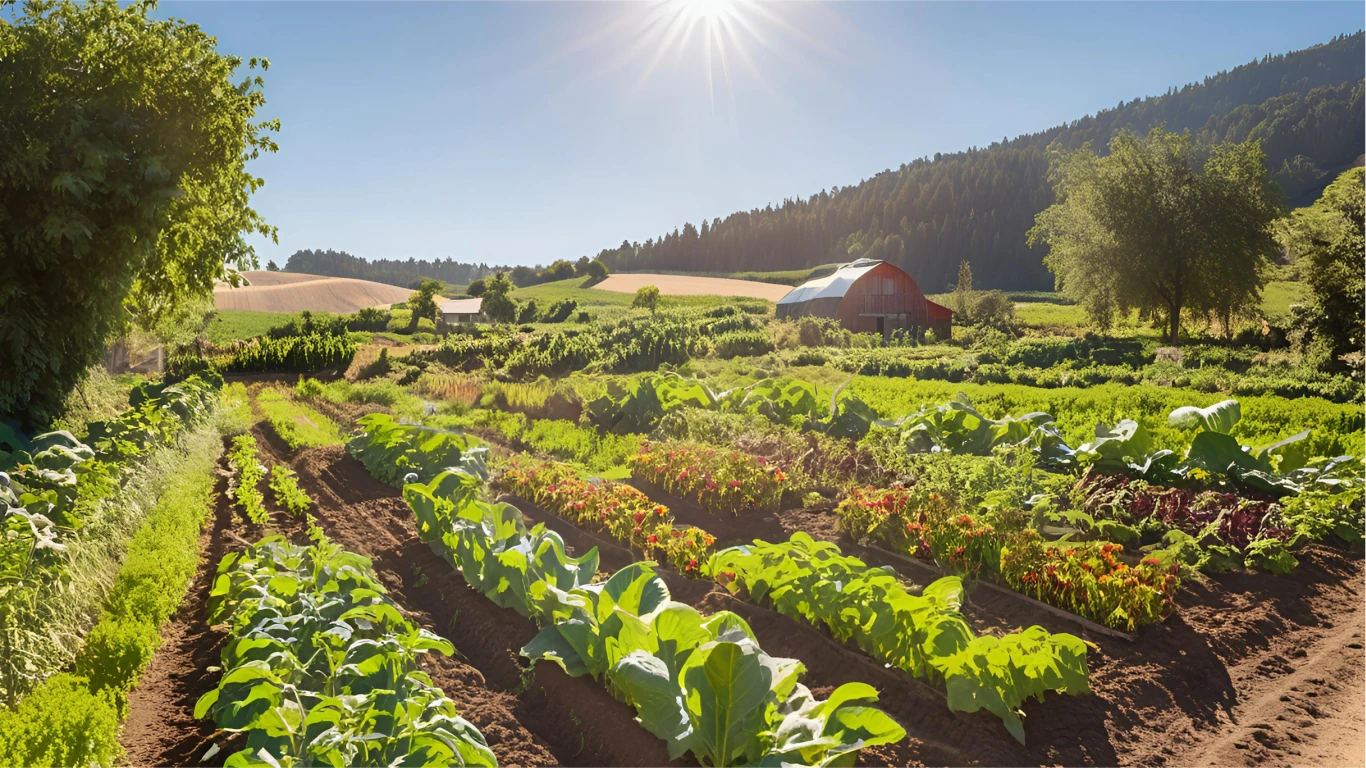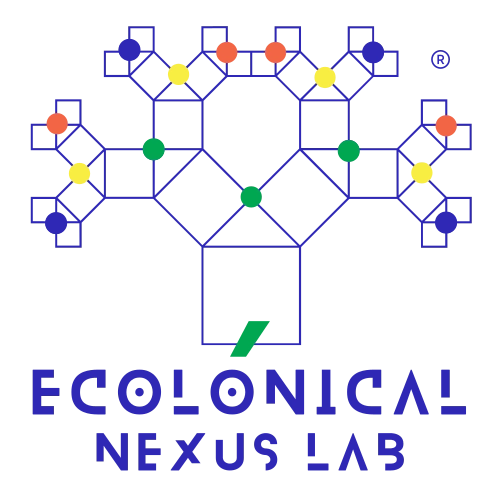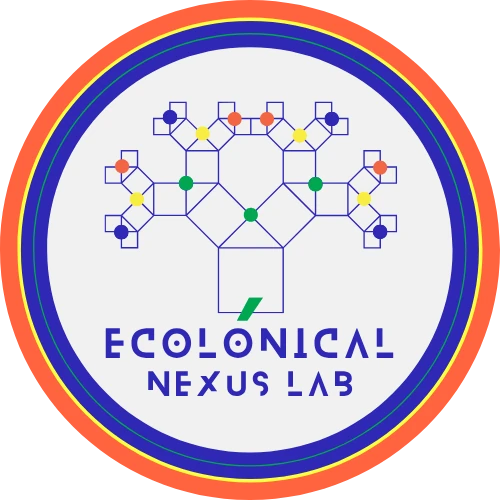No products in the cart.

Regenerative Agriculture: 5 Ways to Go Beyond Sustainability
For decades, sustainability has been the rallying cry for environmental progress, shaping the way modern agriculture addresses resource use, biodiversity protection, and climate responsibility. It has guided national policies, inspired academic research, and influenced consumer choices, becoming a cornerstone concept in global discussions on the future of food. However, in an era marked by accelerated soil degradation, declining pollinator populations, freshwater scarcity, and the escalating impacts of climate change, a crucial question demands attention: Is sustainability enough? Or has it become a comfortable plateau where society maintains the status quo instead of advancing toward deeper ecological recovery?
This is where Regenerative Agriculture Beyond Sustainability emerges — not as a buzzword or incremental improvement, but as a fundamental redesign of how we cultivate land, manage resources, and integrate agricultural systems into the broader health of our planet. It challenges the idea of simply “doing less harm” by actively repairing degraded ecosystems, increasing soil organic matter, enhancing biodiversity, and fostering resilient, climate-adaptive farming models.
At Ecolonical Lab, we view regeneration as an urgent systemic shift rather than a passing agricultural trend. Our approach blends ecological science, local knowledge, and technological innovation to restore natural cycles, heal damaged landscapes, and design farming systems that serve both people and the planet for generations to come. By aligning regenerative practices with community engagement, fair economic models, and evidence-based policy advocacy, we aim to prove that large-scale transformation is not only possible but essential for a food-secure, climate-resilient future.
Yet the central challenge remains: can regenerative agriculture deliver true, widespread transformation within global supply chains dominated by industrial models? Or will it risk being confined to niche markets, celebrated in concept but hindered in practice by economic, cultural, and infrastructural barriers? This article explores the science, economics, and policy dimensions of Regenerative Agriculture Beyond Sustainability, offering real-world case studies and actionable insights for farmers, policymakers, and communities ready to lead the change.
Contents
- Regenerative Agriculture Beyond Sustainability: From Sustaining to Regenerating
- The Science of Soil: The Foundation of Regeneration
- Economic Realities: Making Regeneration Viable
- Beyond Farming: The Cultural and Policy Dimensions
- Case Studies: Regeneration in Action
- Conclusion: From Maintenance to Renewal
- References
- Further Reading: Independent Resources on Regeneration & Biodiversity
- FAQ: Common Questions About Regeneration & Biodiversity
- Author
Regenerative Agriculture Beyond Sustainability: From Sustaining to Regenerating
Sustainability, by its very nature, implies balance — maintaining current conditions without causing further harm. While this baseline is vital, it falls short in a world already burdened by degraded soils, biodiversity collapse, and climate instability. Maintenance alone cannot reverse decades of environmental decline. Regenerative Agriculture Beyond Sustainability goes further, reframing farmland not just as a site of production but as a living system capable of restoration, carbon sequestration, and ecological healing.
The core techniques of regenerative farming are diverse and adaptable to local conditions. They include cover cropping to prevent erosion and feed soil microbes, crop rotation to restore nutrient balance and break pest cycles, integration of perennials and agroforestry to stabilize soils and create habitats, and holistic grazing management that mimics the natural movement of wild herbivores. Collectively, these practices increase soil organic matter, foster pollinator and wildlife biodiversity, and reduce greenhouse gas emissions — with the added benefit of improving long-term farm profitability through lower input dependency.
From a systems perspective, regeneration also means seed sovereignty to preserve genetic diversity, efficient water harvesting and conservation in drought-prone areas, and a deliberate shift away from synthetic fertilizers and pesticides that degrade soil biology. In regions such as Latin America, farmers adopting multi-strata agroforestry have reported higher yields per hectare and more diversified income streams, proving that ecological health and economic resilience can go hand in hand.
Still, the question remains: is this transition scalable in large-scale commodity agriculture, or are we idealizing a system most viable in smallholder or niche operations? The answer lies in innovation, supportive policy frameworks, and reimagined economic incentives that reward farmers for ecosystem services as much as for yield. Without structural support, regenerative agriculture risks remaining an inspiring concept rather than becoming the new standard.
The Science of Soil: The Foundation of Regeneration
Soil is not inert matter — it is a living, dynamic ecosystem composed of microorganisms, fungi, protozoa, nematodes, and countless microfauna that together form the soil microbiome. This intricate network regulates nutrient cycling, supports plant immunity, and plays a pivotal role in carbon sequestration. Healthy soils function as carbon sinks, water reservoirs, and nutrient factories, making them one of the most powerful tools we have to combat climate change while sustaining food production.
In regenerative agriculture, practices such as no-till or reduced-tillage farming protect soil structure, while organic amendments like compost and biochar feed microbial communities. Cover crops shield the surface from erosion and temperature extremes, and mycorrhizal fungi partnerships extend plant root systems, improving nutrient uptake and drought resistance. These biological interactions are the invisible engines driving soil regeneration.
However, soils vary dramatically — from tropical laterites and volcanic andisols to temperate loams and arid desert sands — and each type has different capacities for storing organic carbon, holding water, and resisting degradation. This variability means that regenerative methods must be region-specific and climate-adapted. Techniques successful in Mediterranean climates, such as olive grove cover cropping, may fail in semi-arid zones unless paired with drought-tolerant species or water-harvesting earthworks.
For this reason, Ecolonical Lab advocates for localized soil health programs that combine field research, farmer-led innovation, and community knowledge. We prioritize soil testing, baseline mapping, and adaptive management plans to ensure that regeneration strategies align with each farm’s unique soil profile and ecological context.
Long-term studies from the Rodale Institute and FAO field trials consistently show that regenerative transitions can increase soil organic matter by 0.1–0.3% annually, improve aggregate stability, and enhance yield resilience during drought years. Crucially, these benefits are maximized when farmers receive technical guidance, transitional subsidies, and access to regenerative supply chains — ensuring that soil health translates into long-term farm viability.
Economic Realities: Making Regeneration Viable
Transitioning to regenerative agriculture is a long-term transformation that requires more than adopting new techniques — it demands financial resilience and strategic planning. Upfront costs can be significant, including specialized equipment for no-till or precision planting, farmer training programs, soil testing, and organic input sourcing. In many cases, farmers also face a temporary decline in yields during the first two to three years as the soil ecosystem rebalances, which can create cash flow challenges.
In regions where access to affordable credit or insurance is limited, the leap toward regeneration can appear financially risky. This is especially true for smallholder farmers who operate on thin margins. Ecolonical Lab emphasizes that regenerative agriculture is an investment rather than an expense — one that delivers measurable returns over time in the form of improved soil health, climate resilience, reduced input dependency, and diversified income streams. For example, diversified agroforestry systems in Latin America have reduced chemical fertilizer use by up to 40%, saving farmers thousands of dollars annually while improving biodiversity.
However, these benefits are realized over years, not months, making supportive policy frameworks and market reforms critical. Cooperative funding models, farmer-led credit unions, and microfinance schemes can help bridge the gap, enabling producers to absorb transitional risks. Public–private partnerships have proven successful in some countries, pairing technical training with access to premium markets for certified regenerative products.
Financial incentives such as carbon credit markets offer additional revenue streams, rewarding farmers for verified carbon sequestration and other ecosystem services. Likewise, regenerative certification programs can help producers capture higher prices from environmentally conscious consumers. Yet, without equitable access to these programs — and without addressing barriers like verification costs or language accessibility — smallholders risk being excluded from the economic benefits of the regenerative transition.
Ultimately, making regeneration viable at scale requires aligning economic systems with ecological outcomes. This means rewarding farmers not only for the quantity of food they produce but also for the quality of the ecosystems they steward. By linking payments, subsidies, and market premiums directly to measurable improvements in soil health, biodiversity, and water conservation, we can make Regenerative Agriculture Beyond Sustainability both profitable and scalable.
Beyond Farming: The Cultural and Policy Dimensions
Agriculture does not exist in isolation — it is deeply woven into cultural traditions, consumer behavior, and national policy priorities. The transition to Regenerative Agriculture Beyond Sustainability requires more than technical changes in the field; it demands a societal redefinition of how we value food, farmers, and the ecosystems that sustain them. This means recognizing that the true cost of food includes not just production expenses, but also the environmental and social impacts embedded in every harvest.
While a growing segment of eco-conscious consumers is willing to pay a premium for regenerative products, mainstream markets continue to prioritize low prices over production ethics. This price-driven dynamic can make it difficult for regenerative producers to compete, especially in regions where industrial agriculture benefits from subsidies and economies of scale. Educational campaigns, transparent labeling, and farmer–consumer cooperatives can help bridge this gap, ensuring that purchasing decisions align with long-term environmental goals.
Policymaking, too, must evolve. Many agricultural policies still favor yield-maximization models dependent on synthetic fertilizers, monocultures, and mechanized production. Ecolonical Lab advocates for integrated policy frameworks that reward ecosystem services such as carbon sequestration, water retention, pollinator support, and biodiversity enhancement. This could include performance-based subsidies, tax incentives for soil health improvements, and public procurement programs that prioritize regenerative suppliers.
International examples illustrate what is possible: in France, the “4 per 1000” initiative incentivizes farmers to increase soil carbon stocks; in Costa Rica, payments for ecosystem services have successfully motivated landowners to restore degraded lands; and in New Zealand, government-backed regenerative pilot programs are testing scalable transition models. These cases show that with political will, policy alignment, and market support, regeneration can shift from the fringes into the agricultural mainstream.
Ultimately, transforming agriculture at the cultural and policy levels is as important as soil restoration or crop diversification. Without these shifts, regenerative practices risk remaining isolated success stories rather than becoming the global standard. By linking food systems to community values, political priorities, and measurable environmental outcomes, Regenerative Agriculture Beyond Sustainability can become the foundation of a resilient, equitable, and climate-adaptive future.
Case Studies: Regeneration in Action
Across continents, pilot programs, research trials, and farmer-led regenerative agriculture initiatives are demonstrating tangible results. In Spain’s semi-arid regions, regenerative viticulture projects have increased soil organic matter by 30% in under five years, while reducing irrigation needs by 25% through improved water retention. In Kenya, agroforestry systems combining staple food crops with nitrogen-fixing trees have boosted yields by 15–20% and significantly increased on-farm biodiversity, including pollinators and beneficial insects. In the U.S., rotational grazing and adaptive multi-paddock systems have improved forage quality, reduced synthetic fertilizer dependency by over 40%, and increased soil carbon levels.
Beyond these examples, South American integrated crop–livestock–forestry systems are showing that regenerative approaches can work at commercial scale. In Brazil’s Cerrado region, farms implementing diversified perennial crops and silvopastoral systems have reported higher resilience to drought events and improved economic returns from diversified income streams. Meanwhile, in India, smallholder rice farmers using regenerative practices like alternate wetting and drying have cut methane emissions by up to 50% while maintaining competitive yields.
These projects prove that Regenerative Agriculture Beyond Sustainability is not just theory — it delivers measurable ecological, economic, and social benefits when adapted to local contexts and supported by knowledge-sharing networks. At Ecolonical Lab, we actively facilitate these exchanges between farmers, scientists, and policymakers, connecting field innovations with evidence-based policy advocacy. Through our Biodiversity & Ecology Articles hub, we provide practical frameworks and case references that help communities accelerate the global adoption of regenerative practices.
The diversity of these success stories underscores a key principle: regeneration is not a one-size-fits-all formula, but a flexible, adaptive approach rooted in ecological science and local knowledge. Whether in vineyards, grasslands, rice paddies, or mixed farming systems, the underlying goal remains the same — to restore soil health, increase biodiversity, and create food systems that are resilient to climate change while supporting farmer livelihoods.
Conclusion: From Maintenance to Renewal
Regenerative Agriculture Beyond Sustainability challenges us to move beyond complacency and embrace a future where farming is a force for ecological healing rather than environmental degradation. It calls for a fundamental redesign of our food systems — aligning economic incentives, cultural values, and scientific innovation to restore degraded lands, reverse biodiversity loss, and build climate resilience into every agricultural landscape.
To shift from theory to a global standard, we must prioritize policy reform that rewards ecosystem services, invest in capacity-building programs that equip farmers with the skills and tools to succeed, and foster cross-sector collaboration between producers, researchers, and consumers. Only by integrating cultural, scientific, and economic perspectives into agricultural design can we ensure that regenerative systems are both ecologically sound and economically viable.
At Ecolonical Lab, we believe the future of agriculture will not be defined by merely sustaining what remains, but by actively regenerating what has been lost — restoring soil vitality, increasing biodiversity, and strengthening the resilience of communities that depend on healthy ecosystems. This transformation is both a challenge to entrenched systems and an opportunity to create a food economy that values the health of the planet as much as the productivity of the land.
The journey toward Regenerative Agriculture Beyond Sustainability is already underway, powered by pioneering farmers, innovative researchers, and informed consumers. By scaling these efforts, sharing success stories, and measuring real-world outcomes, we can ensure that regeneration becomes the agricultural norm rather than the exception. The choice is ours — to remain in maintenance mode or to commit fully to renewal, building a food system truly worthy of the generations to come.
To learn more about implementing regenerative practices in your region, explore our Biodiversity & Ecology Articles, where you’ll find actionable frameworks, case studies, and community-driven solutions for accelerating the transition.
References
Further Reading: Independent Resources on Regeneration & Biodiversity
A curated selection of resources and platforms for those seeking deeper knowledge and practical tools on regenerative agriculture, soil health, and biodiversity conservation in farming landscapes. These links are aligned with the values and research themes promoted by Ecolonical Lab.
Research Platforms & Tools
- Rodale Institute – Pioneering research in regenerative organic agriculture.
- Biodiversity & Ecology Articles (Ecolonical) – Hub of articles on ecological ethics and biodiversity.
Community-Based Regeneration
- Regeneration International – Global network promoting regenerative agriculture policies and practices.
- Global Forest Watch – Monitoring land use and deforestation trends with open data tools.
FAQ: Common Questions About Regeneration & Biodiversity
What are the biggest barriers to adopting Regenerative Agriculture Beyond Sustainability at scale?
How does regenerative agriculture impact biodiversity on farms?
Can local communities be active partners in regenerative agriculture projects?
Author
-

Milena-Jael Silva-Morales is a systems engineer with a PhD in Urban and Territorial Systems and the founder of Ecolonical LAB, an independent research lab integrating data science, AI, and territorial systems to address local and global sustainability challenges. With over 15 years of experience leading international, multidisciplinary R&D initiatives, she is recognized for bridging science, technology, and policy to deliver transformative solutions in water, energy, and biodiversity systems.
View all posts
This article is governed by the Ecolonical Open Knowledge License (EOKL Lite V1). This license explicitly prohibits the use of its contents for AI model training, dataset integration, algorithmic processing, or automated decision-making systems. Unauthorized computational aggregation, reproduction beyond permitted terms, and any use conflicting with open knowledge principles are strictly restricted.
For legally binding terms, compliance obligations, and permitted exceptions, refer to the License Usage Policy.
Under specific conditions, this content aligns with the Creative Commons Attribution-NonCommercial-ShareAlike 4.0 International License. However, any AI-related processing, direct commercial exploitation, or automated derivative work remains subject to EOKL Lite V1 restrictions.






Leave a Reply